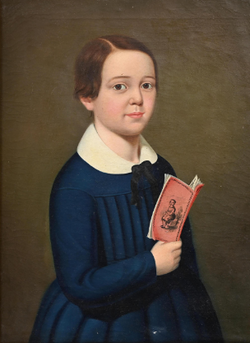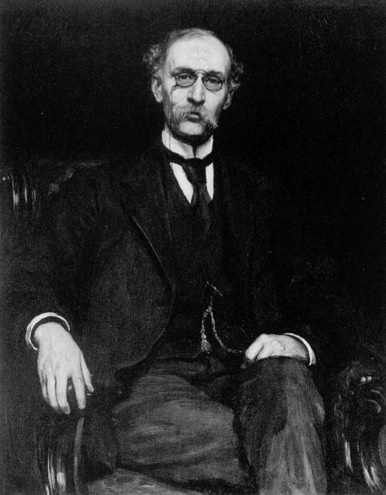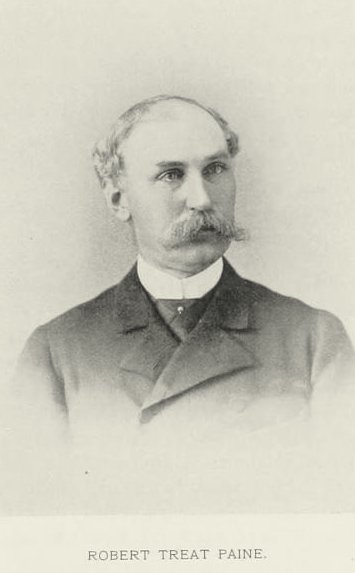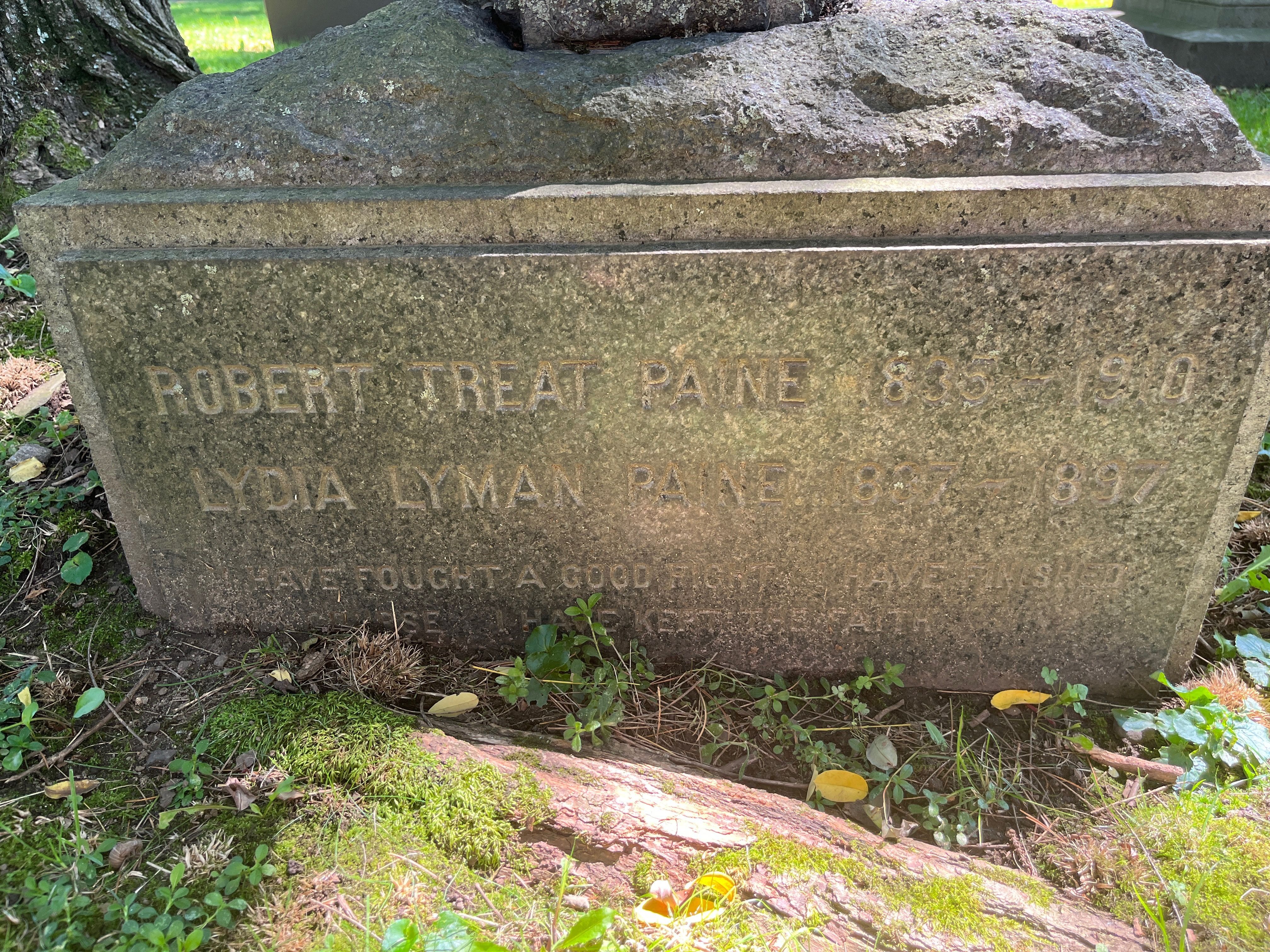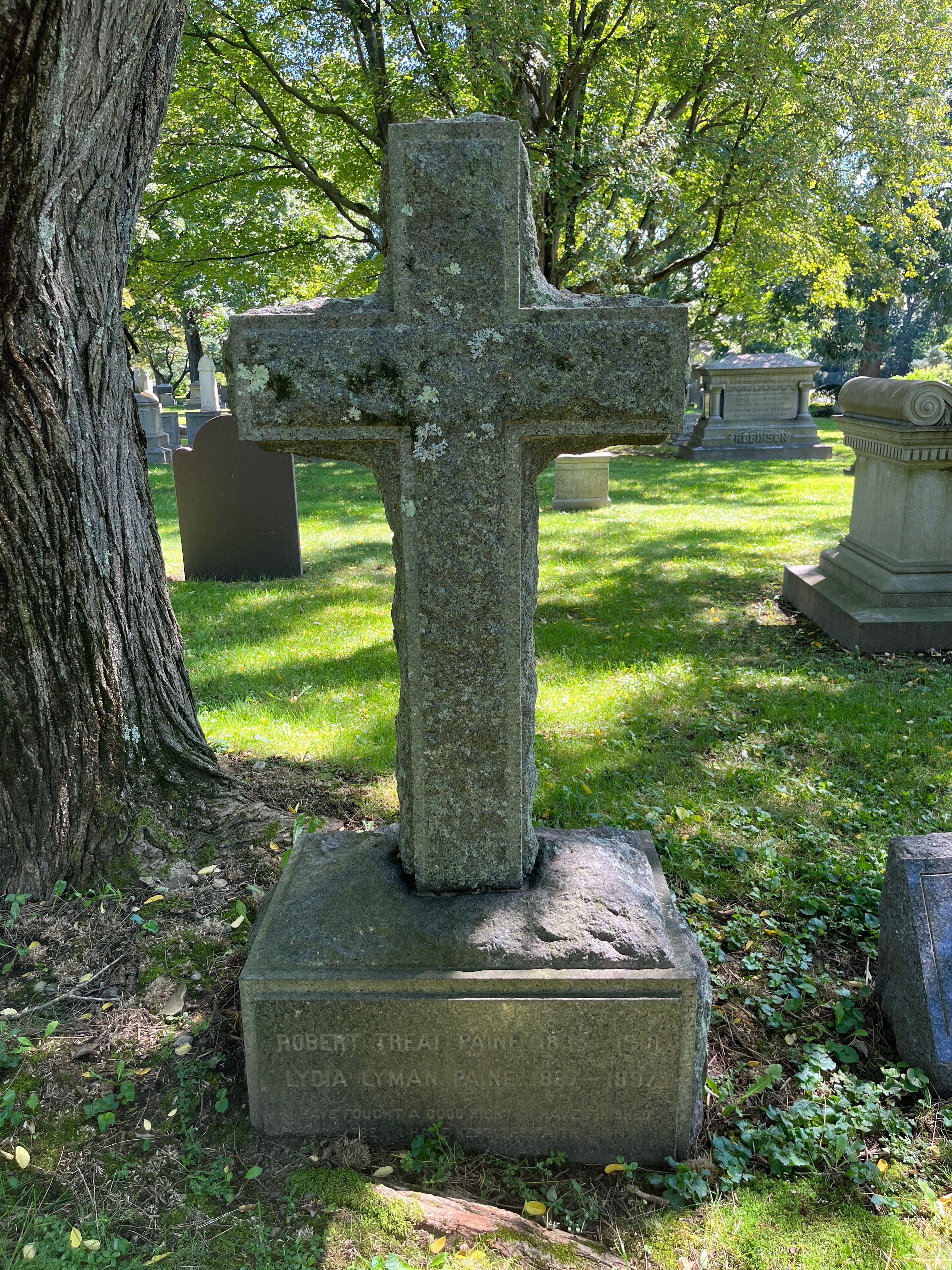from Wikipedia, The Online Encyclopedia
Portrait of Robert Treat Paine by Hubert von Herkomer, 1884Robert Treat Paine, Jr. (October 28, 1835-August 11, 1910) was a Boston lawyer, philanthropist and social reformer and grandson of the signer of the Declaration of Independence. He is most widely known for his work as chairman of the building committee of Boston's Trinity Church in Copley Square, for his leadership of 19th century Boston philanthropists, for his summer home in Waltham, Massachusetts, and for his experiments in building housing for low-and middle-income workers.
Paine's brick row-house development on Greenwich and Sussex streets in Roxbury, Massachusetts is listed on the National Register of Historic Places as part of the Frederick Douglass Square Historic District. Another of his housing experiments, an 1890s 100-house subdivision between Round Hill and Sunnyside streets in Jamaica Plain, has been deemed eligible for nomination to the National Register.
from Wikipedia, The Online Encyclopedia
Portrait of Robert Treat Paine by Hubert von Herkomer, 1884Robert Treat Paine, Jr. (October 28, 1835-August 11, 1910) was a Boston lawyer, philanthropist and social reformer and grandson of the signer of the Declaration of Independence. He is most widely known for his work as chairman of the building committee of Boston's Trinity Church in Copley Square, for his leadership of 19th century Boston philanthropists, for his summer home in Waltham, Massachusetts, and for his experiments in building housing for low-and middle-income workers.
Paine's brick row-house development on Greenwich and Sussex streets in Roxbury, Massachusetts is listed on the National Register of Historic Places as part of the Frederick Douglass Square Historic District. Another of his housing experiments, an 1890s 100-house subdivision between Round Hill and Sunnyside streets in Jamaica Plain, has been deemed eligible for nomination to the National Register.
Family Members
Sponsored by Ancestry
Advertisement
Records on Ancestry
Advertisement
